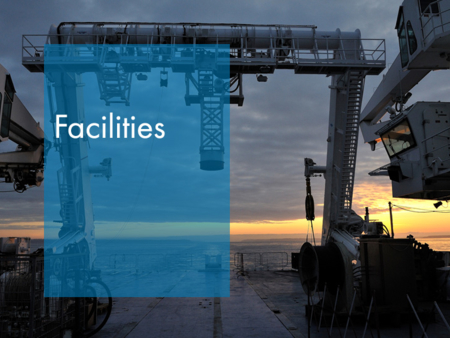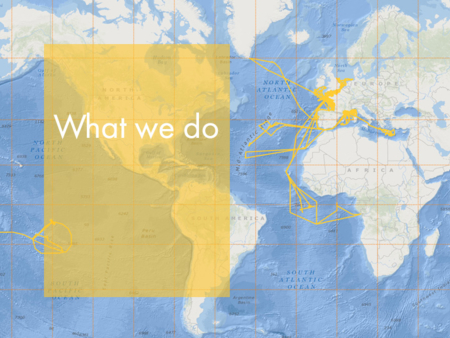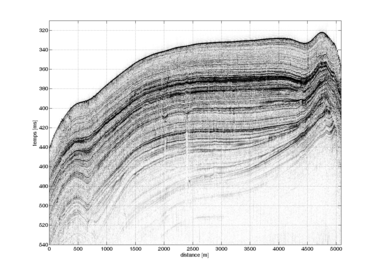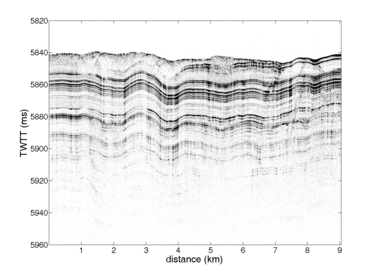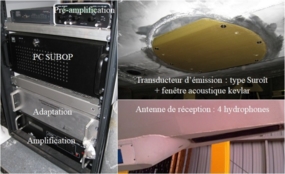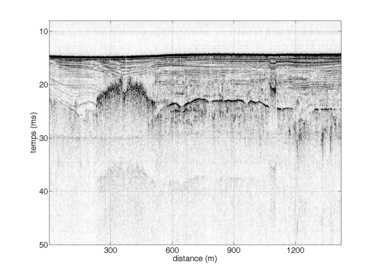Sub-bottom profilers
Sub-bottom profilers are acoustic devices used to visualize sedimentary layers buried several dozens of metres deep.
Data collected by sub-bottom profilers can be used for qualitative studies of geological structures and sedimentation processes, and to estimate geoacoustic parameters (reflection coefficient, absorption, etc.) and, consequently, to characterize the geological environment.
The sub-bottom profilers of the oceanographic vessels Pourquoi pas ?, L’Atalante and Thalassa work generally at low frequencies of between 1.5 kHz and 6.5 kHz to ensure considerable penetration with excellent vertical resolution.
The sub-bottom profiler on the Marion Dufresne exploits higher frequencies of between 2.5 kHz and 7 kHz, compensated by a considerable level of transmission. The acoustic signals it transmits are linear frequency modulation pulses and the signal it receives comprises a time series of echoes reflected off the sedimentary interfaces.
At the frequencies under consideration, the received energy comes mostly from coherent reflections generated by differences in the acoustic impedance of the seabed.
